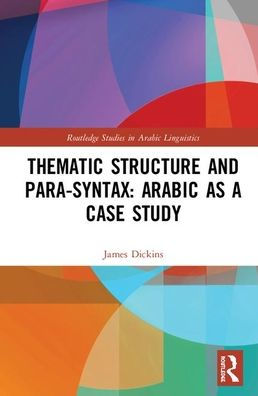5
1
9780367367503


Thematic Structure and Para-Syntax: Arabic as a Case Study / Edition 1 available in Hardcover, eBook

Thematic Structure and Para-Syntax: Arabic as a Case Study / Edition 1
- ISBN-10:
- 0367367505
- ISBN-13:
- 9780367367503
- Pub. Date:
- 03/17/2020
- Publisher:
- Taylor & Francis
- ISBN-10:
- 0367367505
- ISBN-13:
- 9780367367503
- Pub. Date:
- 03/17/2020
- Publisher:
- Taylor & Francis

Thematic Structure and Para-Syntax: Arabic as a Case Study / Edition 1
$180.0
Current price is , Original price is $180.0. You
$180.00
Temporarily Out of Stock Online
Temporarily Out of Stock Online
180.0
Out Of Stock

Product Details
| ISBN-13: | 9780367367503 |
|---|---|
| Publisher: | Taylor & Francis |
| Publication date: | 03/17/2020 |
| Series: | Routledge Studies in Arabic Linguistics |
| Pages: | 176 |
| Product dimensions: | 6.12(w) x 9.19(h) x (d) |
About the Author
From the B&N Reads Blog
